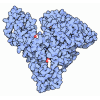Entry Database : PDB / ID : 5nfpTitle Glucocorticoid Receptor in complex with budesonide Glucocorticoid receptor Nuclear receptor coactivator 2 Keywords / / / / / Function / homology Function Domain/homology Component
/ / / / / / / / / / / / / / / / / / / / / / / / / / / / / / / / / / / / / / / / / / / / / / / / / / / / / / / / / / / / / / / / / / / / / / / / / / / / / / / / / / / / / / / / / / / / / / / / / / / / / / / / / / / / / / / / / / / / / / / / / / / / / / / / / / / / / / / / / / / / / / / / / / / / / / / / / / / / / / / / / / Biological species Homo sapiens (human)Method / / / Resolution : 2.1 Å Authors Edman, K. / Wissler, L. Journal : J. Med. Chem. / Year : 2017Title : Selective Nonsteroidal Glucocorticoid Receptor Modulators for the Inhaled Treatment of Pulmonary Diseases.Authors: Hemmerling, M. / Nilsson, S. / Edman, K. / Eirefelt, S. / Russell, W. / Hendrickx, R. / Johnsson, E. / Karrman Mardh, C. / Berger, M. / Rehwinkel, H. / Abrahamsson, A. / Dahmen, J. / ... Authors : Hemmerling, M. / Nilsson, S. / Edman, K. / Eirefelt, S. / Russell, W. / Hendrickx, R. / Johnsson, E. / Karrman Mardh, C. / Berger, M. / Rehwinkel, H. / Abrahamsson, A. / Dahmen, J. / Eriksson, A.R. / Gabos, B. / Henriksson, K. / Hossain, N. / Ivanova, S. / Jansson, A.H. / Jensen, T.J. / Jerre, A. / Johansson, H. / Klingstedt, T. / Lepisto, M. / Lindsjo, M. / Mile, I. / Nikitidis, G. / Steele, J. / Tehler, U. / Wissler, L. / Hansson, T. History Deposition Mar 15, 2017 Deposition site / Processing site Revision 1.0 Oct 4, 2017 Provider / Type Revision 1.1 Nov 8, 2017 Group / Category / citation_authorItem _citation.journal_volume / _citation.page_first ... _citation.journal_volume / _citation.page_first / _citation.page_last / _citation.title / _citation_author.name Revision 1.2 Jan 17, 2024 Group / Database references / Refinement descriptionCategory chem_comp_atom / chem_comp_bond ... chem_comp_atom / chem_comp_bond / database_2 / pdbx_initial_refinement_model Item / _database_2.pdbx_database_accession
Show all Show less
 Open data
Open data Basic information
Basic information Components
Components Keywords
Keywords Function and homology information
Function and homology information Homo sapiens (human)
Homo sapiens (human) X-RAY DIFFRACTION /
X-RAY DIFFRACTION /  SYNCHROTRON /
SYNCHROTRON /  MOLECULAR REPLACEMENT / Resolution: 2.1 Å
MOLECULAR REPLACEMENT / Resolution: 2.1 Å  Authors
Authors Citation
Citation Journal: J. Med. Chem. / Year: 2017
Journal: J. Med. Chem. / Year: 2017 Structure visualization
Structure visualization Molmil
Molmil Jmol/JSmol
Jmol/JSmol Downloads & links
Downloads & links Download
Download 5nfp.cif.gz
5nfp.cif.gz PDBx/mmCIF format
PDBx/mmCIF format pdb5nfp.ent.gz
pdb5nfp.ent.gz PDB format
PDB format 5nfp.json.gz
5nfp.json.gz PDBx/mmJSON format
PDBx/mmJSON format Other downloads
Other downloads 5nfp_validation.pdf.gz
5nfp_validation.pdf.gz wwPDB validaton report
wwPDB validaton report 5nfp_full_validation.pdf.gz
5nfp_full_validation.pdf.gz 5nfp_validation.xml.gz
5nfp_validation.xml.gz 5nfp_validation.cif.gz
5nfp_validation.cif.gz https://data.pdbj.org/pub/pdb/validation_reports/nf/5nfp
https://data.pdbj.org/pub/pdb/validation_reports/nf/5nfp ftp://data.pdbj.org/pub/pdb/validation_reports/nf/5nfp
ftp://data.pdbj.org/pub/pdb/validation_reports/nf/5nfp

 Links
Links Assembly
Assembly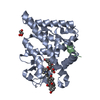
 Components
Components Homo sapiens (human) / Gene: NR3C1, GRL / Production host:
Homo sapiens (human) / Gene: NR3C1, GRL / Production host:  Trichoplusia ni (cabbage looper) / References: UniProt: P04150
Trichoplusia ni (cabbage looper) / References: UniProt: P04150 Homo sapiens (human) / References: UniProt: Q15596
Homo sapiens (human) / References: UniProt: Q15596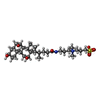
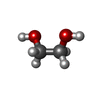

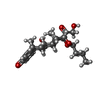





 X-RAY DIFFRACTION / Number of used crystals: 1
X-RAY DIFFRACTION / Number of used crystals: 1  Sample preparation
Sample preparation SYNCHROTRON / Site:
SYNCHROTRON / Site:  ESRF
ESRF  / Beamline: ID23-1 / Wavelength: 1.07 Å
/ Beamline: ID23-1 / Wavelength: 1.07 Å Processing
Processing MOLECULAR REPLACEMENT
MOLECULAR REPLACEMENT Movie
Movie Controller
Controller



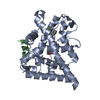

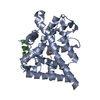
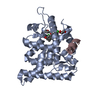
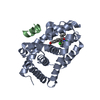
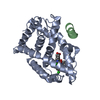

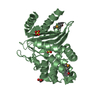
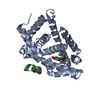
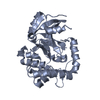
 PDBj
PDBj








